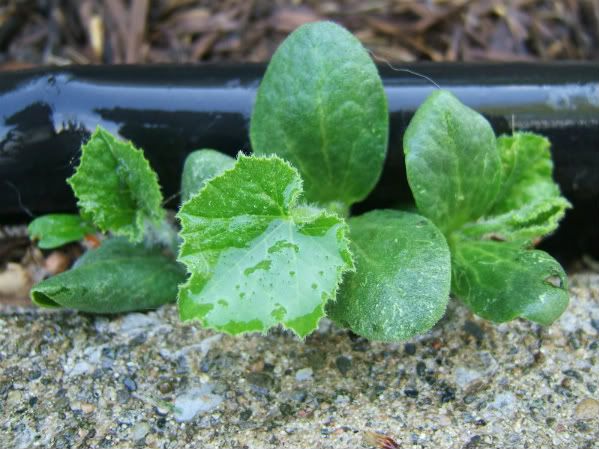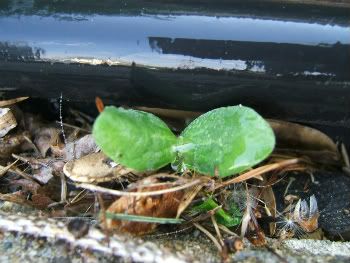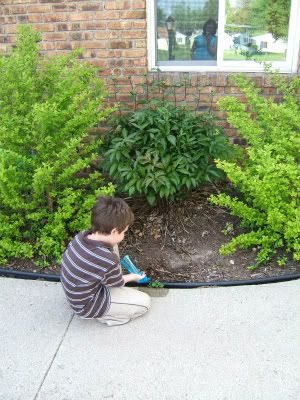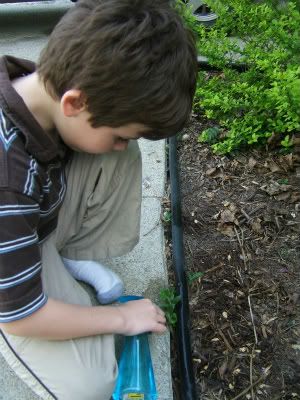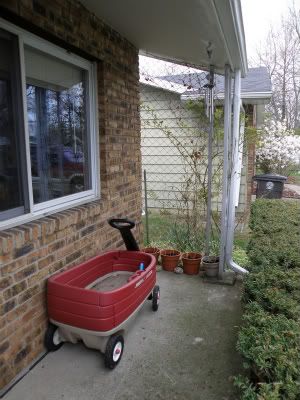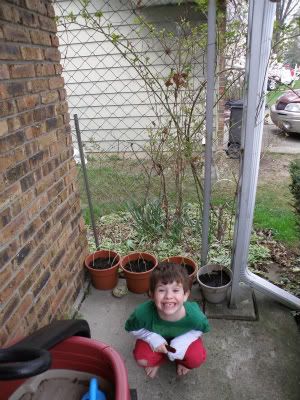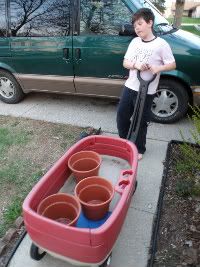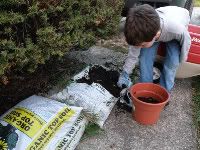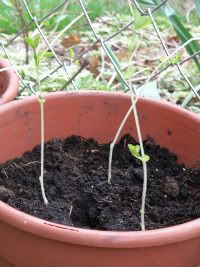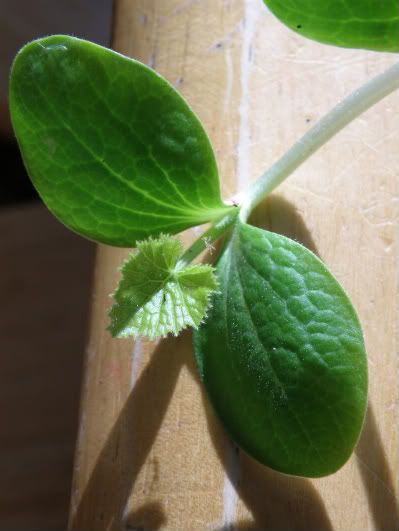 Fresh Food from Small Spaces: The Square-Inch Gardener's Guide to Year-Round Growing, Fermenting, and Sprouting by R.J. Ruppenthal
Fresh Food from Small Spaces: The Square-Inch Gardener's Guide to Year-Round Growing, Fermenting, and Sprouting by R.J. Ruppenthal
Sort of a 'quick guide' that leads the reader to visualize the possibilities they have for producing some of their own food, R.J. Ruppenthal packs a lot of ideas into this simple, short read. He takes a refreshing look at growing food in VERY small spaces. I say 'refreshing' because I've read so many wonderful gardening books loaded with ideas that stop me in my tracks once I realize how much SPACE is needed. Through his own trial and error he has learned to maximize his small apartment and patio to produce a good portion of his own food.
He has nice descriptions of effective containers for veggies, where to place them, and how to care for them. He provides many good ideas for helpful tools like homemade coldframes that are small enough to fit on a balcony or patio, which can provide year-round leafy greens. He doesn't just focus on veggies, however. I was enlightened by his chapter on sprouts. I really had no idea that sprouts are so nutritious and are so simple to grow. The author grows pounds of sprouts of many varieties each week on top of his refrigerator! His chapter on fermented foods such as yogurt, kimchi and saurkraut made me want to try the processes out for myself. I was astounded by the idea of housing some chickens in a tiny yard, but he explained his ideas for a chicken 'tractor' (a pen that is moved around the outdoor space), vertical chicken coops, or miniature coops. He explains the possibility of keeping a beehive in an urban outdoor space, and of growing mushrooms just about anywhere.
What I liked about this book is that it was realistic and yet hopeful. The author admits that it is really not possible to be completely self-sufficient in an urban lifestyle. He writes that an urban gardener could probably grow 20 to 40 percent of his nutrition needs. However, he also describes scenarios of specializing in one food production within your space and then bartering with someone else who specializes in another (the oldest and purest form of free trade!). His main point is that no, in an urban setting with lack of land/space, you will not become completely self sufficient, but you can at least depend on yourself for a portion of your food and keep your food costs down. He is not alone in his opinion that food prices will inevitably go up as we face an energy crisis, so learning some ways to grow at least some of your food is a good idea. The author emphasizes that the techniques he describes are not new, and that before the last couple of generations who have grown up in our cheap-fuel-lifestyle (which includes cheap, albeit not always healthy, food), growing as much of your own food used to be just a normal part of life. He feels it is imperative that we reconnect with that spirit of our not-so-distant ancestors.
The author describes some of the uncomfortable changes we might be facing in a society that has built this cheap-fuel-lifestyle, once that source of energy is depleted, and once food production is also affected by climate change and the harmful effects of industrial farming. He approaches the possible changes with amazing hope, however. Though he doesn't describe himself as a survivalist, he has some practical thoughts on getting prepared for looming shortages in food and energy.
Though not incredibly detailed in every topic, I found this book very useful and it has inspired me to look further into some grow-it or produce-it-yourself methods beyond just vegetable gardens.
He has nice descriptions of effective containers for veggies, where to place them, and how to care for them. He provides many good ideas for helpful tools like homemade coldframes that are small enough to fit on a balcony or patio, which can provide year-round leafy greens. He doesn't just focus on veggies, however. I was enlightened by his chapter on sprouts. I really had no idea that sprouts are so nutritious and are so simple to grow. The author grows pounds of sprouts of many varieties each week on top of his refrigerator! His chapter on fermented foods such as yogurt, kimchi and saurkraut made me want to try the processes out for myself. I was astounded by the idea of housing some chickens in a tiny yard, but he explained his ideas for a chicken 'tractor' (a pen that is moved around the outdoor space), vertical chicken coops, or miniature coops. He explains the possibility of keeping a beehive in an urban outdoor space, and of growing mushrooms just about anywhere.
What I liked about this book is that it was realistic and yet hopeful. The author admits that it is really not possible to be completely self-sufficient in an urban lifestyle. He writes that an urban gardener could probably grow 20 to 40 percent of his nutrition needs. However, he also describes scenarios of specializing in one food production within your space and then bartering with someone else who specializes in another (the oldest and purest form of free trade!). His main point is that no, in an urban setting with lack of land/space, you will not become completely self sufficient, but you can at least depend on yourself for a portion of your food and keep your food costs down. He is not alone in his opinion that food prices will inevitably go up as we face an energy crisis, so learning some ways to grow at least some of your food is a good idea. The author emphasizes that the techniques he describes are not new, and that before the last couple of generations who have grown up in our cheap-fuel-lifestyle (which includes cheap, albeit not always healthy, food), growing as much of your own food used to be just a normal part of life. He feels it is imperative that we reconnect with that spirit of our not-so-distant ancestors.
The author describes some of the uncomfortable changes we might be facing in a society that has built this cheap-fuel-lifestyle, once that source of energy is depleted, and once food production is also affected by climate change and the harmful effects of industrial farming. He approaches the possible changes with amazing hope, however. Though he doesn't describe himself as a survivalist, he has some practical thoughts on getting prepared for looming shortages in food and energy.
Though not incredibly detailed in every topic, I found this book very useful and it has inspired me to look further into some grow-it or produce-it-yourself methods beyond just vegetable gardens.

